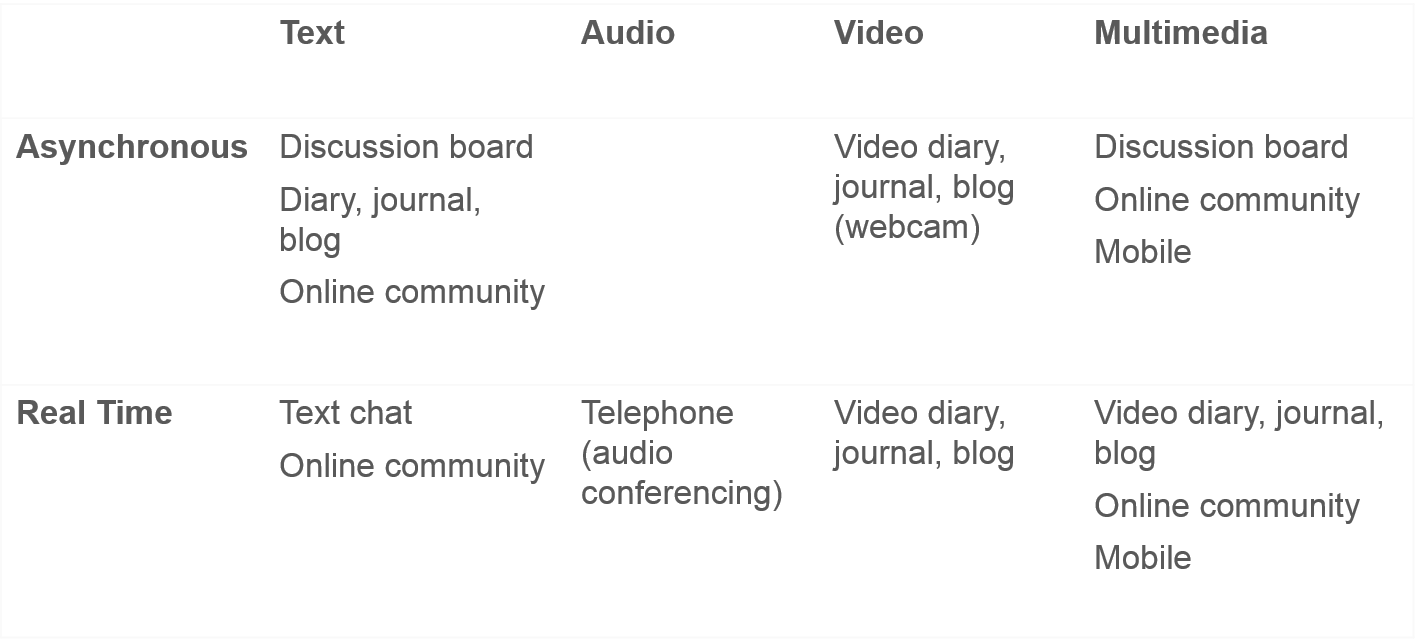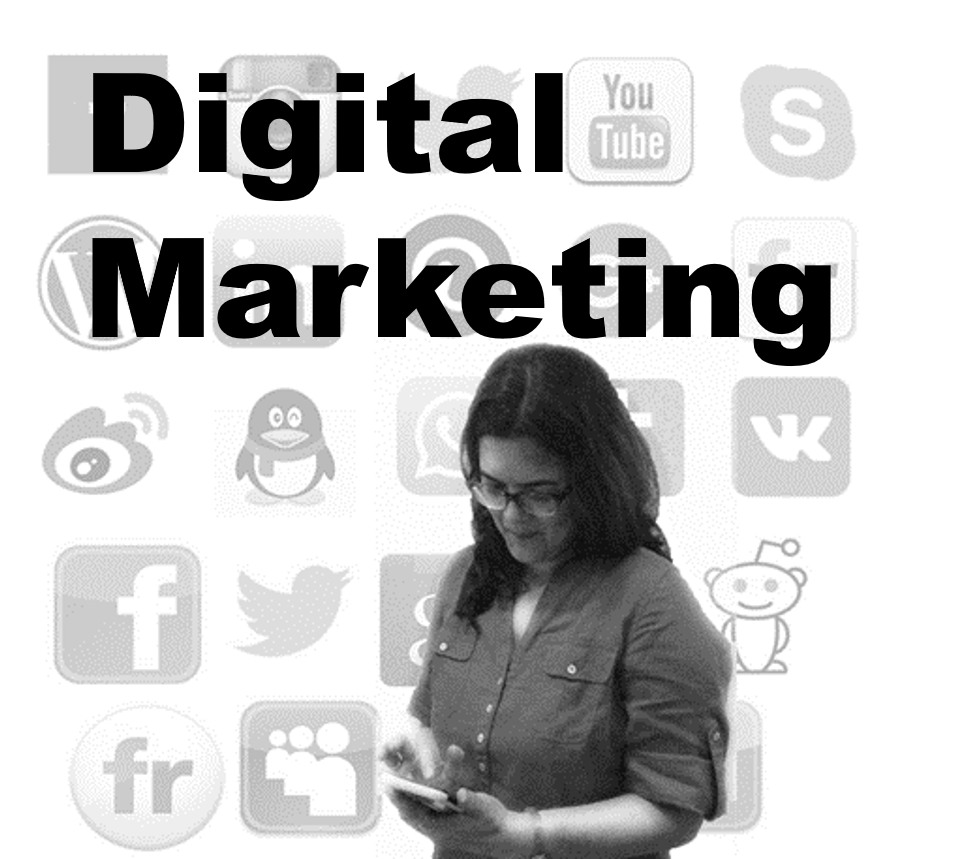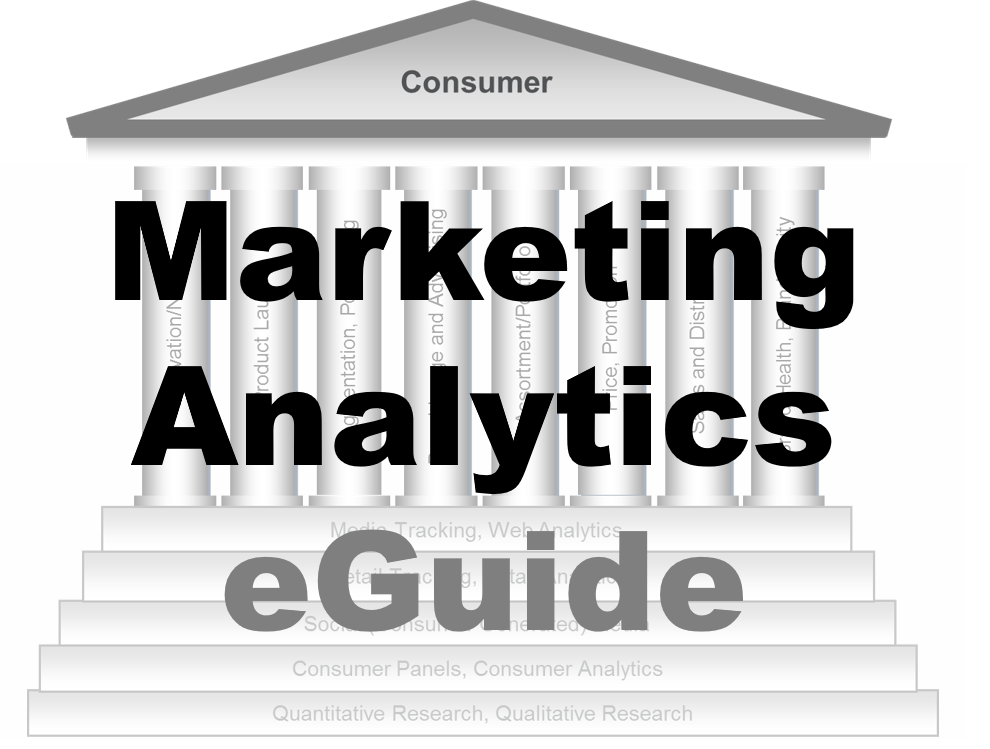-
Qualitative Research
Qualitative Research
Qual and Quant
User-generated Content
UGC benefits & limitations
iSnack 2.0 saga
Applications of Qual
Qual with Quant Research
Product Development
Motivational Research, Semiotics, Usage & Attitude
Creative Development
Packaging Development
The Qual Advantage
Watchouts
Data Collection
Group Discussions
Interviews
Observation
Online Qual
Research Design & Preparation
Projective and Enabling Techniques
Word Association
Third Party Questioning
Sentence Completion
Personification
Brand Mapping
Drawing and Collage
Bubble Drawings
Role Playing
Laddering
Body Language
Guidelines for Moderating
Analysis and Interpretation
- Segmentation
- Qualitative Research
- Quantitative Research
- Customer Satisfaction and Customer Value
- Consumer Panels and Consumer Analytics
- Big Data and Consumer Analytics
- Marketing Education
- Is Marketing Education Fluffy and Weak?
- How to Choose the Right Marketing Simulator
- Self-Learners: Experiential Learning to Adapt to the New Age of Marketing
- Negotiation Skills Training for Retailers, Marketers, Trade Marketers and Category Managers
- Simulators becoming essential Training Platforms
- What they SHOULD TEACH at Business Schools
- Experiential Learning through Marketing Simulators
-
MarketingMind
Qualitative Research
Qualitative Research
Qual and Quant
User-generated Content
UGC benefits & limitations
iSnack 2.0 saga
Applications of Qual
Qual with Quant Research
Product Development
Motivational Research, Semiotics, Usage & Attitude
Creative Development
Packaging Development
The Qual Advantage
Watchouts
Data Collection
Group Discussions
Interviews
Observation
Online Qual
Research Design & Preparation
Projective and Enabling Techniques
Word Association
Third Party Questioning
Sentence Completion
Personification
Brand Mapping
Drawing and Collage
Bubble Drawings
Role Playing
Laddering
Body Language
Guidelines for Moderating
Analysis and Interpretation
- Segmentation
- Qualitative Research
- Quantitative Research
- Customer Satisfaction and Customer Value
- Consumer Panels and Consumer Analytics
- Big Data and Consumer Analytics
- Marketing Education
- Is Marketing Education Fluffy and Weak?
- How to Choose the Right Marketing Simulator
- Self-Learners: Experiential Learning to Adapt to the New Age of Marketing
- Negotiation Skills Training for Retailers, Marketers, Trade Marketers and Category Managers
- Simulators becoming essential Training Platforms
- What they SHOULD TEACH at Business Schools
- Experiential Learning through Marketing Simulators
Online Qual
As consumers increasingly converse on the net, it benefits researchers to engage with them online. Online methods yield greater efficiencies, making it quicker, easier and less expensive to conduct qual studies.
Moving online however requires considerable adaptation. Besides the appreciation of the new technologies, researchers must learn how to initiate and drive interaction online. There is the need to proactively engage with participants, to keep them motivated, encourage them to participate, and ensure that they remain focussed. This is similar to what transpires in conventional in-person qual, except that the researcher needs to adapt to doing so in an online environment.
Basic principles remain the same. The value derived from the research hinges on the quality of the recruitment methods, and the skills of the researcher in moderating the group, interpreting the data, and drawing actionable insights. It is important that the research is designed to invoke an engaging, evolving experience rather than a Q&A style of interaction, which goes better with quant research.
The wide variety of online platforms that currently exist are categorized in Exhibit 4.6, in terms of timing (real time, asynchronous) and media type (text, audio, visual and multimedia).
Diary, journal and blog (whether text or video) are intended for individual observation or interview. Rest of the platforms shown in Exhibit 4.6 could be configured for focus groups or in-depth interviews.
Discussion Boards
Discussion boards or bulletin boards are versatile and can generate rich content. Boards involve pre-recruited participants from diverse geographical locations. Their number can vary greatly depending on the nature of the study, though 15–20 respondents would fit the majority of boards. Where the subject matter has greater depth, it is more productive to engage with fewer participants. The duration is also quite flexible; it can last anywhere from 2 to 10 days, and participants typically commit to log in once a day or a few times per day, over the duration of the exercise.
In addition to typing their thoughts, participants can post videos and audios using webcam, audio, and mobile input tools that can incorporate facial expressions and body language into the discussions.
Discussion boards have evolved since the text-based Q&A type bulletin boards of the past. It is important that these platforms are moderated by experienced researchers, or else they could easily degenerate into glorified open-ended Q&A surveys. The inclusion of image, video and audio enables researchers to read non-verbal communication and tacit signs, such as facial expressions, body language cues, tone of voice, inflexion and pauses. Skilled moderators utilize analogies, projectives and other techniques that can help board participants express their hearts and minds through “digital body language”, with a remarkable degree of personality and affect.
Video-based Online
Video-based online, which taps on webcam and streaming technology is the closest reflection of in-person focus groups and interviews. Its use has expanded rapidly with the increase in high-speed internet penetration and the widespread adoption of free/low-cost video conferencing platforms like Skype and Zoom.
As one technological wave follows another on the net, online qual will keep evolving. In the past developers took a bottom-up approach accommodating existing tools and technologies to create a range of diverse online platforms, such as those depicted in Exhibit 4.6. Now these applications are better integrated, providing for real time as well as asynchronous interaction, across multiple media types, within a single platform.
Online Advantages
- Travelling to a research facility is no longer a requirement; participants, researchers and clients may even be dispersed across countries or continents. This not only saves cost but also allows for the participation of respondents who would otherwise find it inconvenient or too time consuming to travel — for instance, busy specialists/professionals or new mothers with babies. Online/telephone platforms also provide access to participants based in politically sensitive or dangerous locations.
- Participants feel relatively secure, relaxed and comfortable participating from their preferred environment, without the physical presence of the moderator and other participants. This also lowers the pressure to conform to the views of others within the group. Practitioners claim that respondents open up more online; that they are candid, honest and critical. They feel less embarrassed and are willing to express their views on sensitive subjects.
- Participants may choose to remain anonymous within their group. They may do so by using avatars, or usernames that are not their real names. They may also choose to refrain from posting information via media, such as video, that would reveal their identities.
- Online platforms provide for both individual and group interaction. Typically, the interface comprises sections or panes on the device screen that can be configured on one-on-one mode or group mode. This allows participants the flexibility to share thoughts individually with the moderator, or with the group as a whole.
- Asynchronous platforms allow participants the convenience of finding time during their day to reflect on the topics, answer the questions, and complete tasks at their own pace.
- Skilled moderators capable of making the interactions engaging and satisfying can get participants to open up and provide thoughtful responses. Asynchronous platforms, where participants are engaged for a few days (or weeks/months as in the case of online communities), provide researchers the time to harvest, probe, and extract an impressive flow of useful information.
- Participants may use a variety of devices to communicate — PC, laptop, tablet or smart phone.
- Many classic projective techniques smoothly translate to online activities where they can be easier to set up, execute and compile. The device keyboard, mouse, screen and software substitute for the cumbersome easel pad, whiteboard and marker pen. Whereas compiling results in face-to-face qualitative studies can be quite laborious, the automation in online qual allows researchers and clients to instantly view aggregate results.
- Online qual can also be more engaging with impactful multi-dimensional visuals and interactive elements such as the drag-and-drop features to construct brand or perception maps, or smiley scales to indicate preferences. Automation could also make tasks such as configuring an ideal product (or combination), by selecting from a set of options, easier and visually engaging.
- Clients can observe from a virtual backroom that allows them to see exactly what the moderator sees. They may confer with the moderator at any time by posting comments that are visible only to the research team.
- Research firms that conduct regular online research save time and money by setting up ongoing, proprietary, online convenience panels.
- Online qual often can be accomplished with greater speed and at lower cost. Besides savings on travel, a confluence of factors such as the explosive growth of social media, spread of broadband connectivity, penetration of computers and smart phones, and the development of online qual platforms, have driven down costs and cycle times.
Online Limitations
- The researcher has limited ability to create a good interview ambience. Unlike face-to-face interviews, there is no scope for standardization of the ambience.
- In asynchronous communication the respondent can deliberate and is less spontaneous.
- Platforms that rely solely on text communication are deprived of
social cues, while others that rely on audio suffer the loss of visual
cues. If the interviewee cannot be seen (or heard in case of text), the
interviewer is unable to read body language, tone of voice, etc. Some cues can
be substituted with the use of emoticons such
as “smiley” faces, which ameliorate the audio-visual deficit to some extent.
This, however, is less of an issue since the widespread adoption of video based online platforms.
Commoditization of Qual
“Qualitative research has become a commodity and is in danger of losing its power to shape business strategy and provide inspiring consumer understanding. We are concerned that the pressure for instant results and the belief that respondents mean what they say and say what they mean will simply undermine true insight. Qualitative research needs to reclaim its interpretative potency, assert its expertise, and keep focused on understanding people and brands in their relevant contexts.” — Rebecca Wynberg, CEO Global Qualitative Practice, TNS (Source: TNS).
The barriers of entry into the qualitative research business have historically been relatively low. These barriers receded further with the onset and growth of online qual. Entrants who rely on online platforms, no longer find it necessary to set up brick and mortar research facilities, and automation further reduced their entry costs. The ensuing influx of boutique service providers and do-it-yourself users, led to what the research industry refers to as the commoditization of qual. Their key concern as reflected in Rebecca Wynberg’s comment is the tension between quick and dirty applications versus truly interpretative qual research.
The true benefits of qual depend greatly on the skills of the researcher — her ability to actively engage with participants, her use of projecting and enabling techniques, her understanding of human behaviours, motivations, verbal and non-verbal communication, her interpretation of the data, and her ability to draw meaning that relates the research to business issues. In order to reclaim its interpretative potency and reinstate the strategic role of qualitative research, she must be brought back to her rightful place at the core of the qual research process.
Managed Online Panels
Nowadays major market research firms and panel service providers maintain fully managed online panels, comprising pre-screened individuals who have agreed to participate in research studies. Participants are usually incentivized by means of reward point schemes, sweepstakes or cash.
Managed online panels differ from those intended for quant surveys in terms of the type of individuals recruited, and their expectations. Quant research panels, often labelled access panels, are intended primarily for short surveys that take 20 minutes or less. These panels tend to be large varying from a few thousand to hundreds of thousands, within a country. On the other hand, panels intended for qual research tend to be much smaller and are often referred to as online convenience panels or online market research communities.
Managed panels reflect a shift towards permission-based research. Since panel members have agreed to be approached for research studies, it is through “permission” that research firms seek their participation. This is a step in the right direction — interruption-based recruitment methods can cause annoyance.
Recruitment is controlled, and the profile and participation history of the members is maintained by the service provider. This allows for selectively inviting panellists on the basis that they qualify to match research criteria. Panel management rules also safeguarded against excessively active “professional respondents”.
Managed panels are cost-effective. Benefits include fast turnaround, real-time reporting and good response rates.
Previous Next
Use the Search Bar to find content on MarketingMind.
Contact | Privacy Statement | Disclaimer: Opinions and views expressed on www.ashokcharan.com are the author’s personal views, and do not represent the official views of the National University of Singapore (NUS) or the NUS Business School | © Copyright 2013-2025 www.ashokcharan.com. All Rights Reserved.






